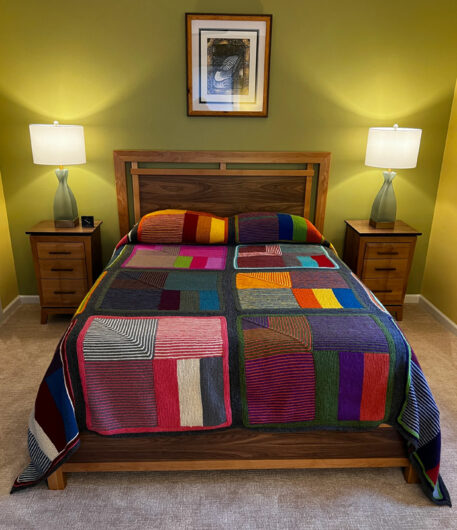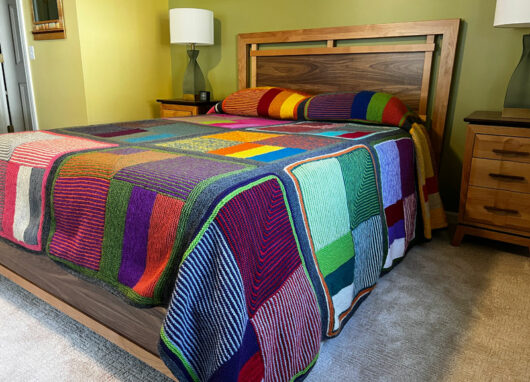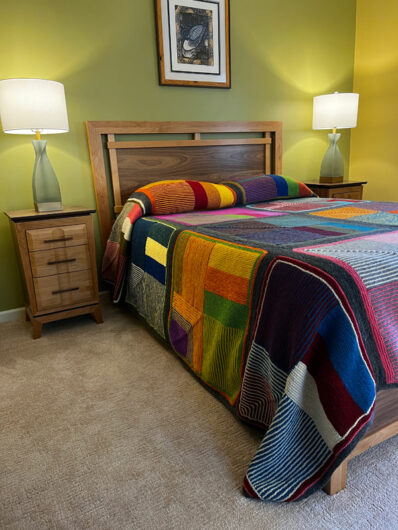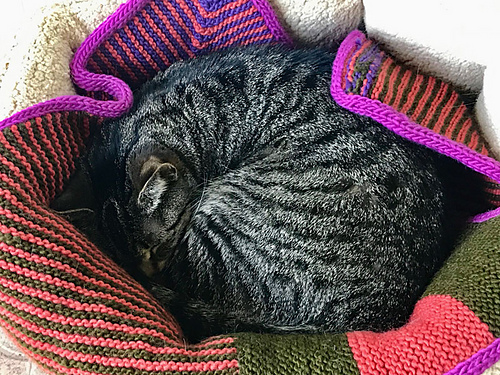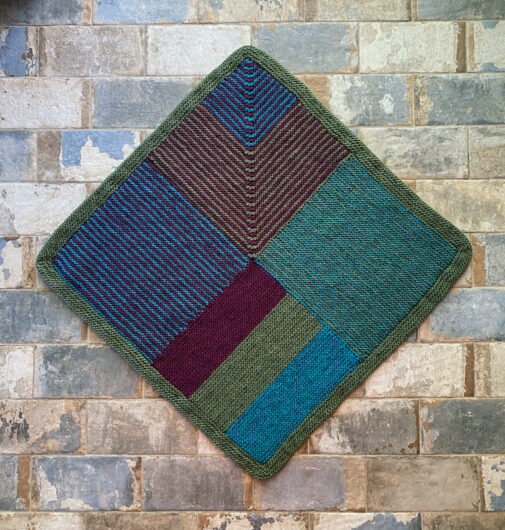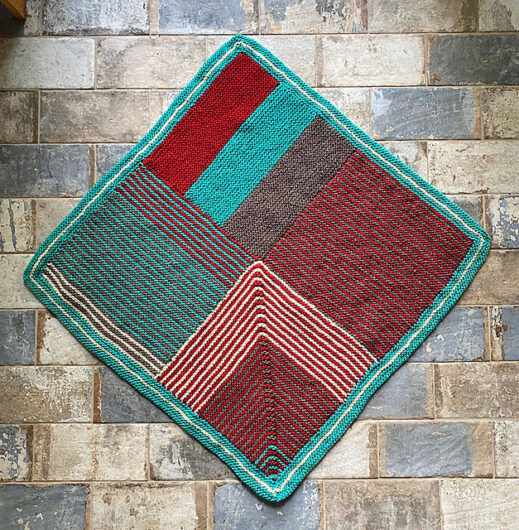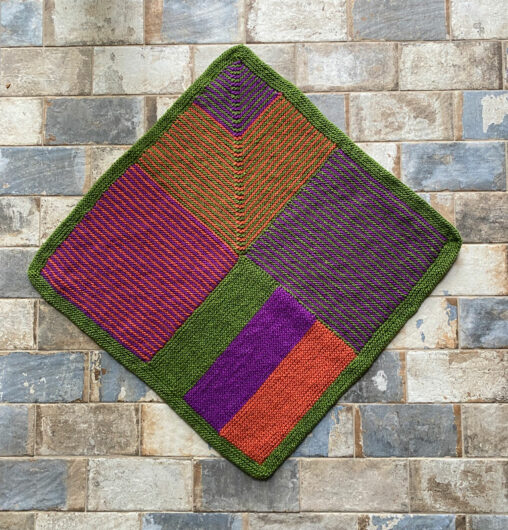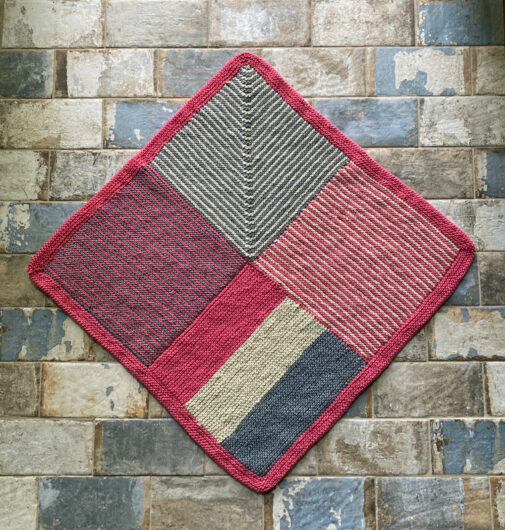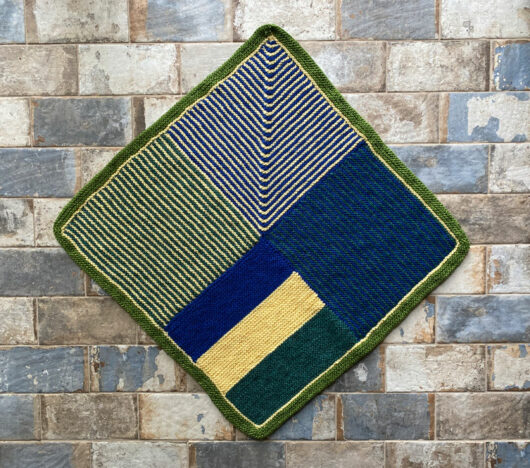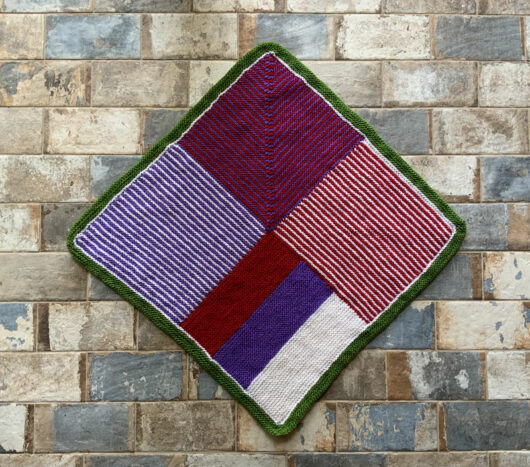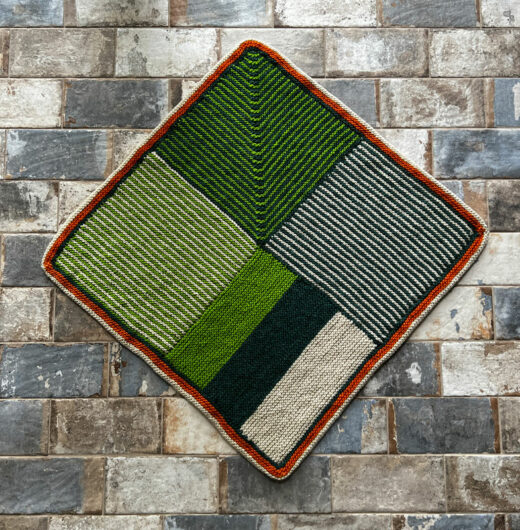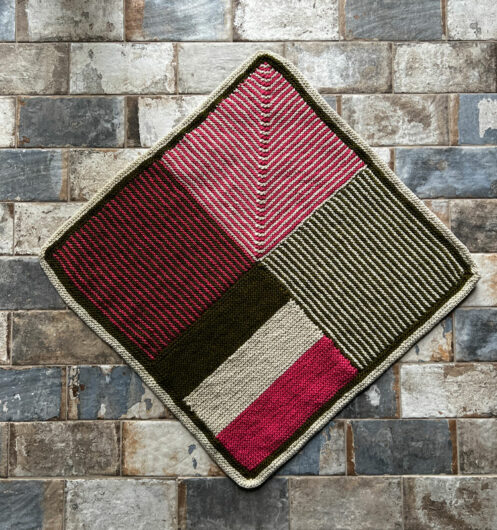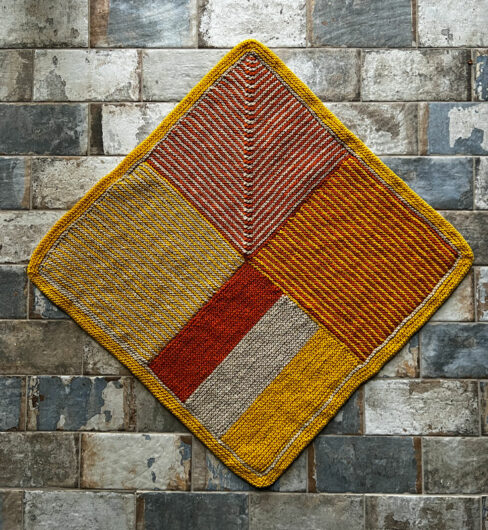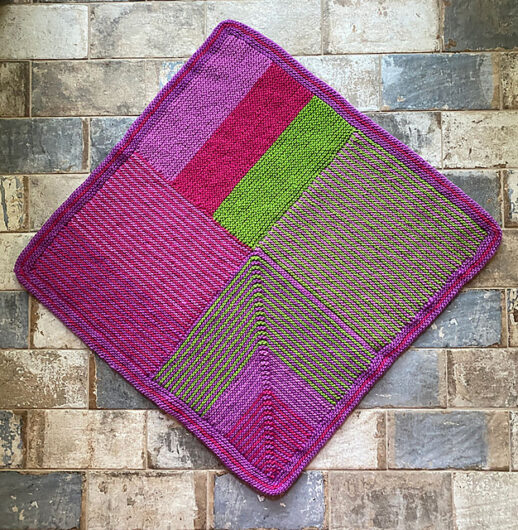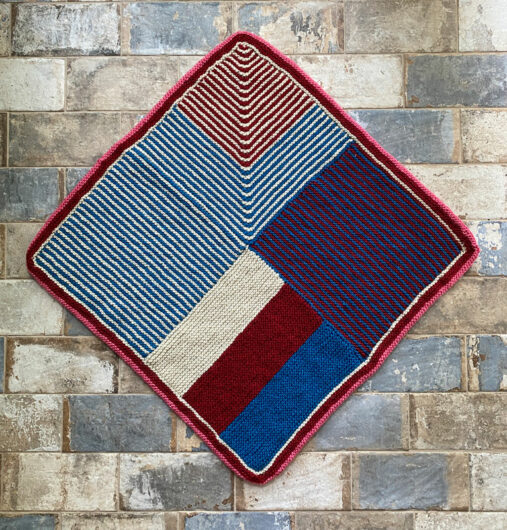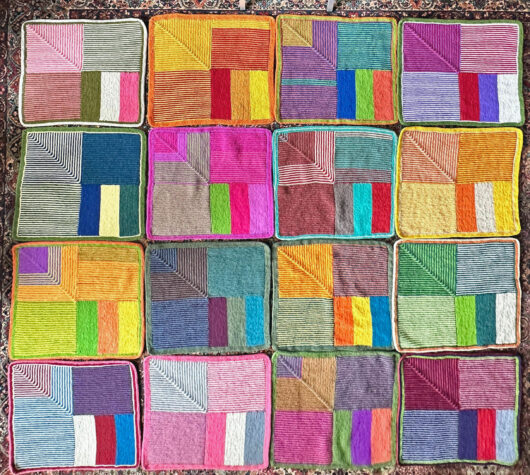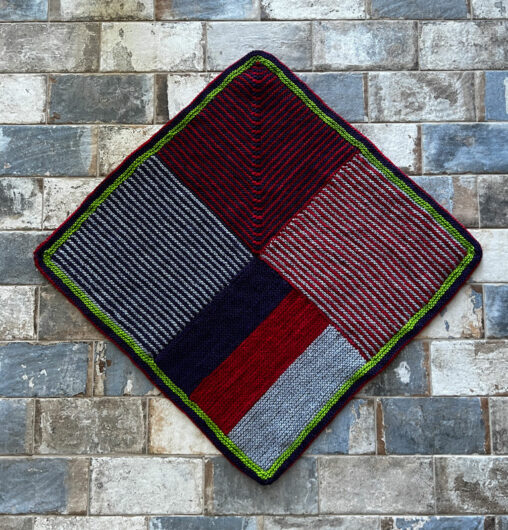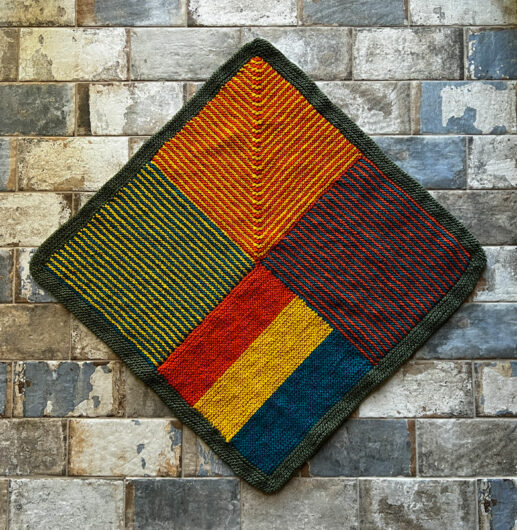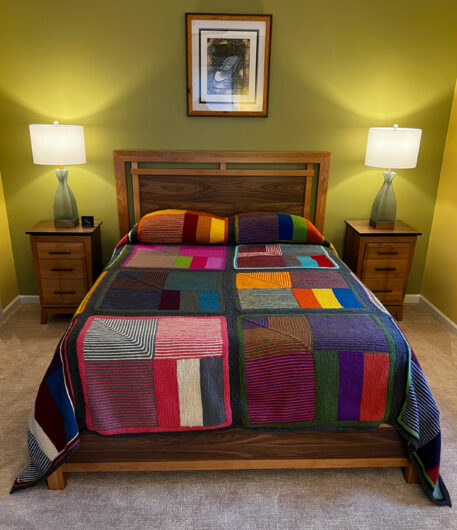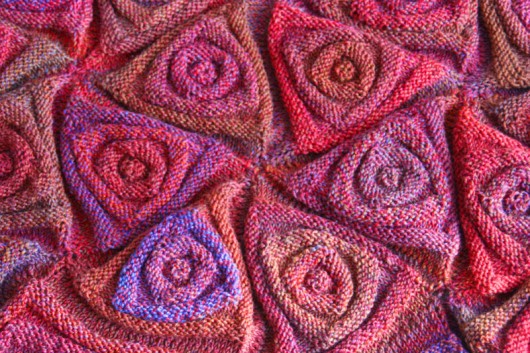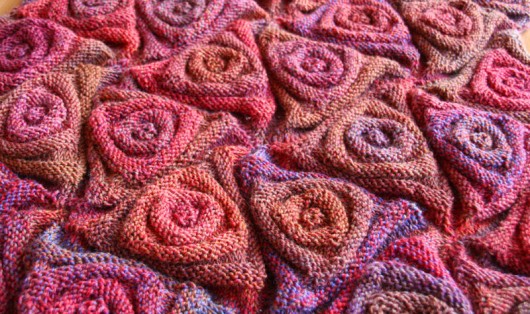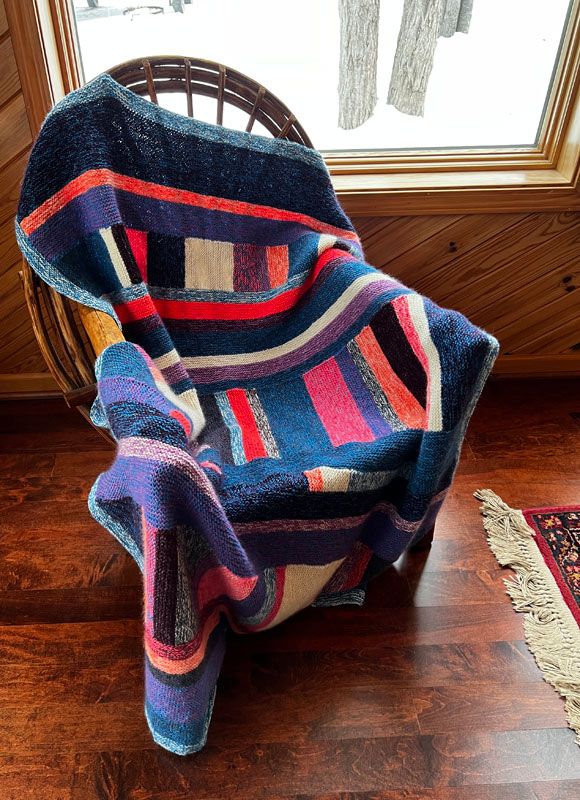
This is Purl Soho’s Library Blanket, designed by the shop’s owner and founder, Joelle Hoverson. This is what purlsoho’s profile says about itself on Ravelry: “Purl Soho is best known for bringing a modern sensibility to traditional fiber arts. Our own brand yarns and an extensive collection of (mostly free!) patterns have been inspiring crafters around the world since 2002.” And so they have.
For this project I decided I wanted to follow the pattern precisely, even the color choices. So I swallowed hard and bought the kit from the NYC Purl Soho shop (with its California warehouse). A few times each year all the Purl Soho shop-brand yarns are on sale (usually for 25% off) so I at least waited for a sale.
The kit for the larger size blanket includes 7 skeins of Purl Soho Lineweight. Lineweight is a fingering weight in 50% wool, 35% alpaca, and 15% linen/flax. Not an easy mix to reproduce in another yarn. For the larger blanket, the pattern suggests you buy one extra skein of the natural shade because–unless you knit to perfect gauge–you’ll be very close on the yardage. I decided to buy one extra skein. Somehow I ended up buying two. And, part of the story on this blanket, I ended up having yardage leftover even from the first skein of the natural Lineweight (“Heirloom White”).
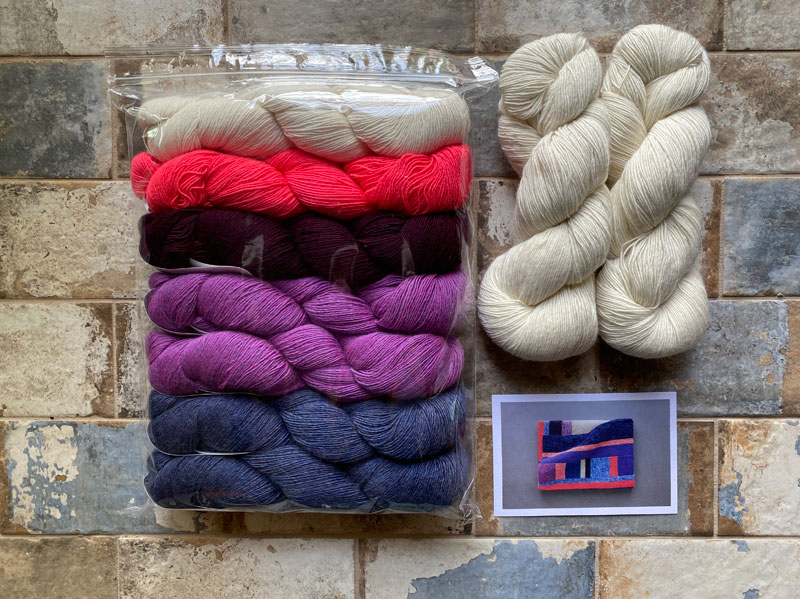
Library Blanket is knit double-stranded throughout with one strand of Lineweight and one strand of Purl Soho Linen Quill. Linen Quill is a light fingering weight 100% merino. Changing one yarn, or the other, or both, as the work progresses creates the interesting marled effect.

My blanket, minus its border used:
Line Weight (494 yards per 100 grams):
94 grams (475 yards) Heirloom White
60 grams (297 yards) Bright Flamingo
82 grams (405 yards) Red Plum
108 grams (534 yards) Lotus Flower
116 grams (573 yards) Blue Jeans
Total Line Weight used in the body of the blanket was 460 grams, 2284 yards.
In Linen Quill (439 yards per 100 grams) I used:
80 grams (352 yards) Pale Oats
52 grams (229 yards) Super Orange
46 grams (202 yards) Dark Iris
20 grams (88 yards) Crocus Bulb
284 grams (1247 yards) Cobalt Blue
Total Linen Quill used in the body of the blanket was 482 grams, 2118 yards.
If you’re knitting this blanket in yarn other than the Purl Soho, the yardage of each color could be helpful. Of course, your mileage may vary. I have a ridiculous amount of excess yarn from this project even not including the two extra skeins of Heirloom White Line Weight I purchased. It’s great yarn though and I am already thinking about what uses I’ll put it to.
As a number of folks who’ve knit this blanket have observed, the blanket looks a tad raw without a border. Plus, there’s a noticeable difference in the cast-on (and off) for the vertical rows as compared to the edges of the horizontal rows. The perfectionists among us might want to knit a border.
I used a double strand of Linen Quill in Cobalt Blue and Heirloom White in Line Weight for my border. It used 90 more grams of yarn. I hooked all my Chiaogoo cords together. Then I picked up stitches all along the outer edge along with 1 stitch in the corner (which I framed with 2 stitch markers). Then I worked garter stitch in the round. On each right-side facing knit round, knitting in the front & the back of the stitch before and after the corner marked stitch created a nicely mitered corners.

This turns out to be a lightweight but very warm blanket. Actually, Library Blanket is more of a throw than a blanket, measuring about 40 inches wide and 56 inches long. That’s assuming you agree that the horizontal rows establish the width. To my eye, those rows represent the bookshelves and the vertical rows are the books of various thicknesses.

Here’s a few thoughts I jotted down to remember in case I knit this again:
(1) When working the slip stitch on the vertical stripes, it looked best to me if I slipped the stitches purlwise.
(2) Using a double-pointed needle in a shorter length or a shorter length circular helped make the vertical sections knit up more quickly.
(3) After working the PSSO on the vertical sections, tightening up the last stitch a bit before starting to work the wrong side row worked well and closed up the sloppy stitch that seemed to want to form.
(4) Even the thought of weaving all those ends in only after completing the knitting made me want to take a long winter’s nap. I worked the ends in as I knit along, using the same technique I use in Fair Isle knitting.
(5) When picking up stitches at the start of the horizontal garter stitch rows I didn’t follow the directions in the pattern. Instead, I picked up stitches between the “bumps,” not into them, because that’s always worked well in my Rambling Rows afghans.
(6) Before cutting the yarns at the end of each section, remember to look ahead to what yarns are used in the coming section. The pattern always says to cut both yarns. But sometimes one of the colors is continued into the next section so you only need to cut one yarn.
I can’t get enough of looking at this one. I love the colors. It doesn’t “go” with anything in my decor, but honestly I don’t care. I like the cut of its jib.

And how cool is this? The shop also sells a matching 1000-piece jigsaw puzzle!

The shop even includes a postcard you can send to a knit buddy announcing your blanket’s completion.

